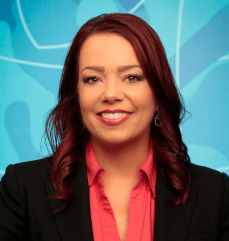By Katrina Hernandez

When planning for retirement, many imagine a work-free life, fueled by tee times and vacations. However, for older adults dealing with the stress of rising medical costs and debt, this is far from reality. In fact, the 2018 Retirement Confidence Survey shows American retirees’ confidence in their ability to afford medical and long-term care expenses has decreased significantly in recent years, with four in 10 retirees reporting their health expenses being much higher than expected and one in four encountering increased costs for long-term care.
Despite boomers’ lack of confidence and continued stress, there are financial decisions that can be made to alleviate the burden of retirement–one of which is determining an end-of-life plan. For patients and their loved ones navigating retirement and the complex conversations surrounding medical bills and long-term care, here are four simple steps to consider in covering the costs of end-of-life-planning.
- Create a savings plan. Meeting with a financial advisor to develop an annual budget can be instrumental in lowering overall debt both pre-and post-retirement. When determining a financial plan, consider any health issues or anticipated long-term healthcare costs to better determine what can be afforded. Owner of Neeld Family Funeral Care and Licensed Funeral Director, Ken Neeld, urges those budgeting for retirement to consider the rising costs of medical bills: “Today, our aging population is afflicted with greater healthcare costs and lingering diagnoses than ever before. Not only can chronic conditions last seven-12 years, they also have a considerable financial impact on patients and the entire family.”
- Gather your benefits. In addition to creating a financial budget, compiling a list of all insurance policies, benefits, and expected pensions can go a long way when planning for retirement and end-of-life. Once finalized, the secured information can be provided to a trust attorney or estate planner to help establish a patient’s last will and testament prior to their passing.
- Advanced planning. As unconventional as it might seem, it is common for patients and their loved ones to meet with funeral directors prior to passing. By developing this relationship in advance, patients and retirees are able to explore end-of-life options available to them and their associated costs, including traditional burial, cremation, and whole body donation. Neeld underscores the core mission of funeral homes to meet the specific economic needs of the deceased and their families, sharing: “What people want during this already difficult time is simple, affordable, and easy-to-understand options and it is our job as funeral directors to provide them.”
- Determining an end-of-life option. According to the National Funeral Directors Association, traditional funeral and burials average $7,360 with the median cost of funeral services and cremation costing $6,078. For anyone seeking to leave a lasting legacy while still alleviating these rising costs, alternatives are available, including whole body donation. Organizations like Science Care, the world’s largest, accredited whole body donation program, partner with funeral homes similar to Neeld’s to educate patients and retirees on whole body donation and the countless benefits it provides.
Majority choose whole body donation for altruistic reasons, Science Care offers a solution to individuals and their loved ones that enables them to leave a lasting impact on medical research, education, and advancements. In fact, one donor has the potential to impact more than 10 medical initiatives. Neeld understands the complexities of aging and planning for end-of-life, “The retirement and end-of-life planning landscape has changed dramatically. Not only do people need to determine plans that make sense financially, but they are also tasked with making decisions based on their values, final wishes, and legacies.”
Although discussions surrounding rising health care costs, death, and dying seem bleak, as executives in healthcare, it is critical for us to understand each option available to patients and their families, so we are able to better educate them on end-of-life planning before situations become dire.
Katrina Hernandez is Vice President of Donor Services for Science Care.
The Editorial Team at Healthcare Business Today is made up of skilled healthcare writers and experts, led by our managing editor, Daniel Casciato, who has over 25 years of experience in healthcare writing. Since 1998, we have produced compelling and informative content for numerous publications, establishing ourselves as a trusted resource for health and wellness information. We offer readers access to fresh health, medicine, science, and technology developments and the latest in patient news, emphasizing how these developments affect our lives.







